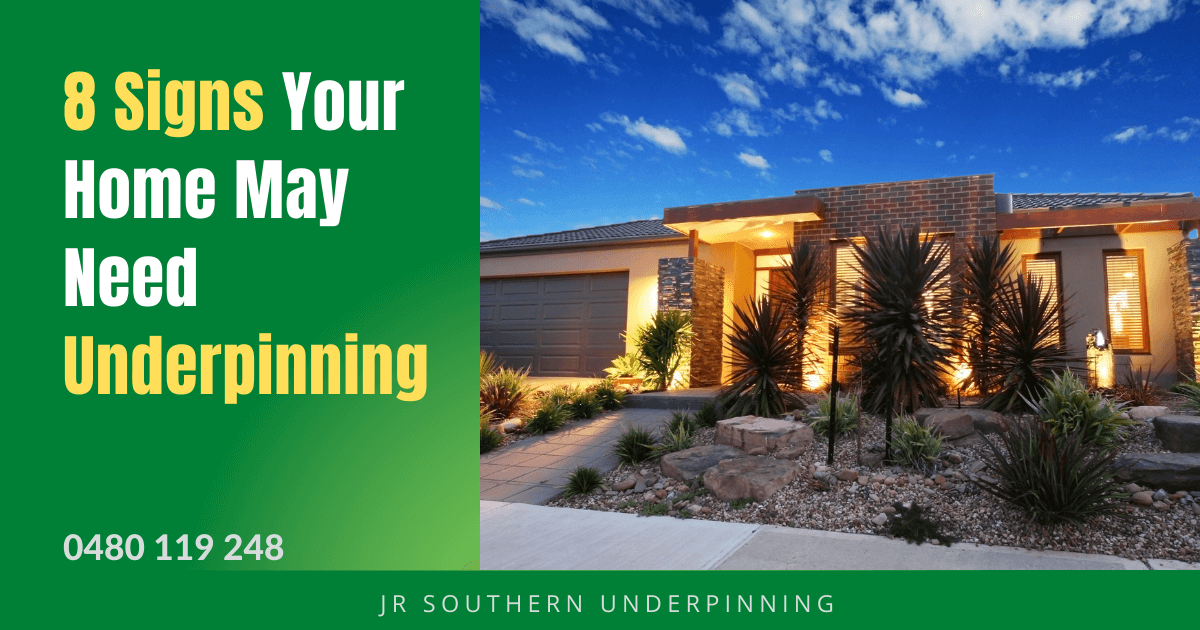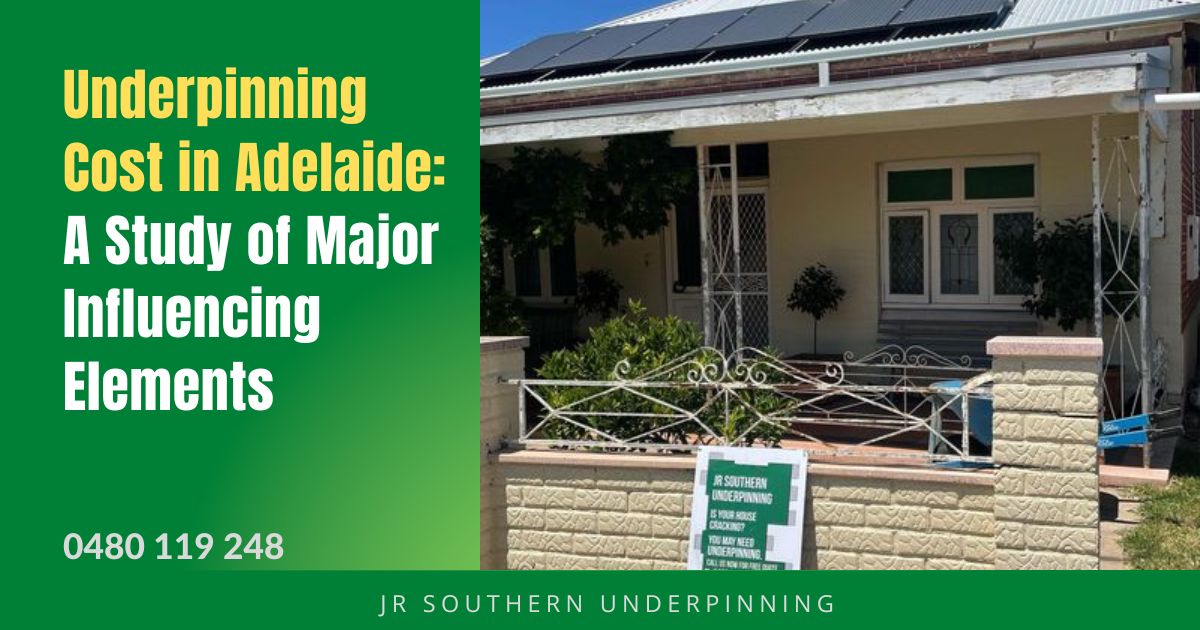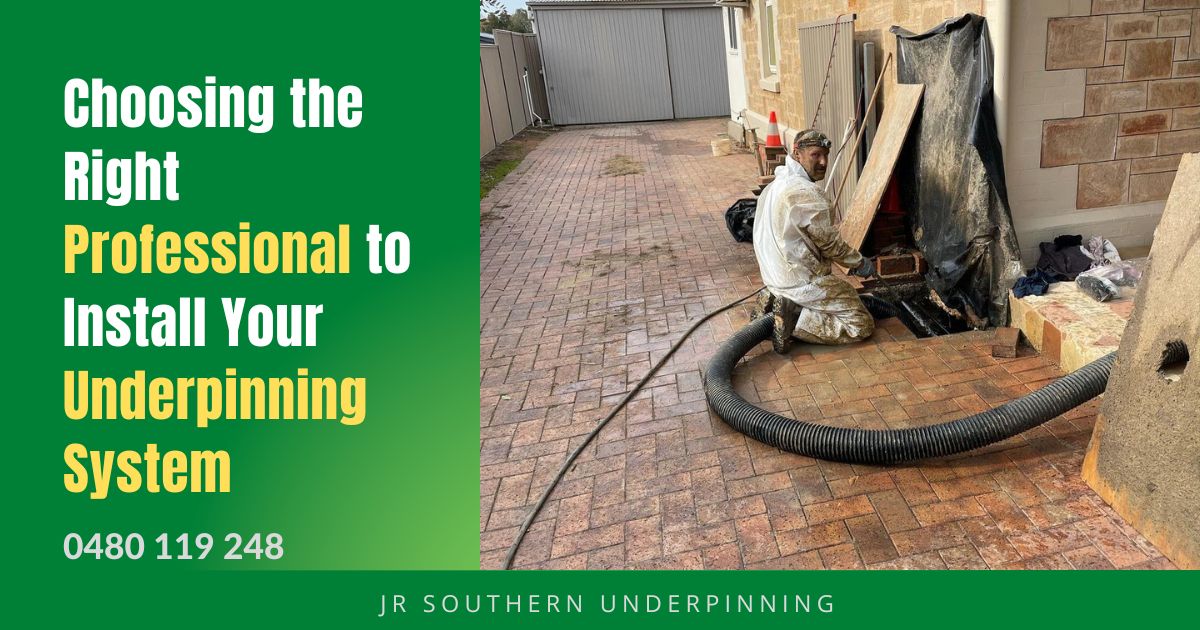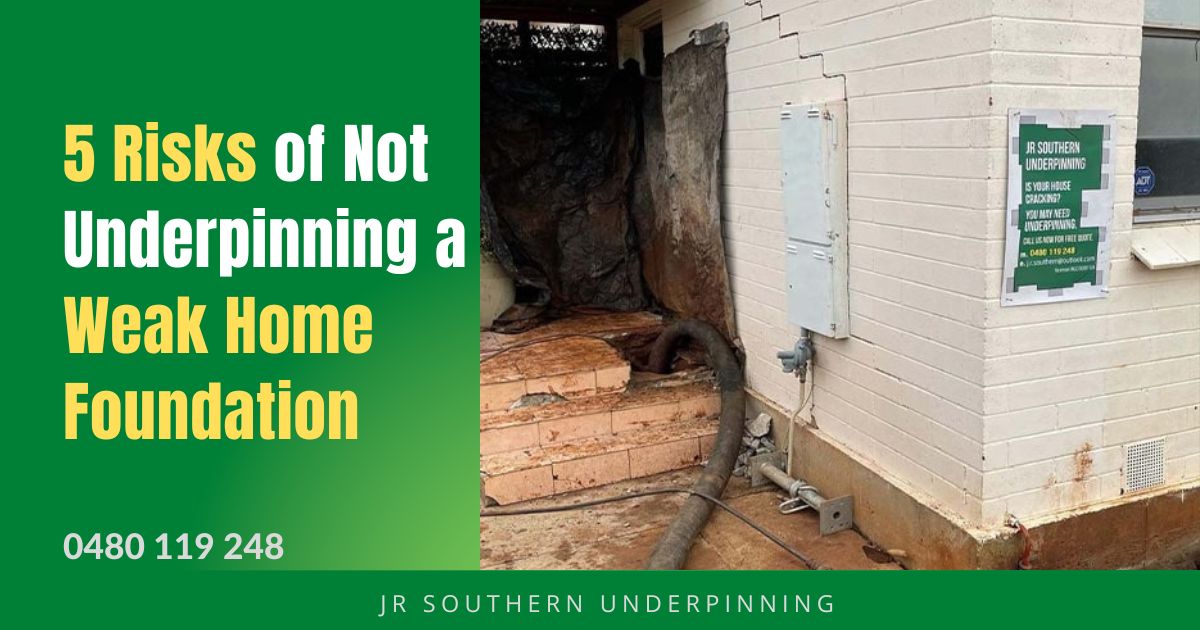Your home is your biggest asset, so keeping it in top condition is important.
If you’re worried whether your home requires underpinning, read our post about the 8 signs your home may need underpinning or call John on 0480 119 248 if you need help.
Underpinning is a process that reinforces the foundation of your home, and it may be necessary if you notice any of the following signs:
1. Cracks in your walls or ceilings
Do you have cracks in your walls or ceilings? If so, how can you tell if they’re serious or not?
– If the cracks are accompanied by sagging or bulging walls or ceilings, this is definitely a sign of a serious problem and you should call a professional immediately.
If you’re still not sure whether or not the cracks in your walls or ceilings are serious, it’s always best to err on the side of caution and call a professional for an assessment.
2. Gaps around doors or windows
Even the best-made doors and windows can develop gaps that allow drafts and moisture to enter the home. If you notice these gaps, it’s important to determine whether they pose a serious problem or if they can be easily repaired.
If the gaps are small and don’t seem to be affecting the home’s energy efficiency, you may be able to seal them yourself with caulk or weatherstripping.
However, if the gaps are large or if you notice condensation or mould around the doors or windows, it’s time to call in the experts. Professionals can help you determine whether the gaps are causing serious problems and, if so, recommend the best way to fix them. And if there are underlying issues, a professional can help you on the best approach to fix the issues.
3. Sagging floors
Some sagging floors can be repaired without underpinning. This is typically done by jacketing the beams with steel or concrete, which will provide additional support. If the beams are severely damaged, they may need to be replaced. However, if sagging is severe or posing harm, you might need to consider underpinning.
If you’re not sure what to do, it is best to consult with a structural engineer to determine if it is necessary to underpin your home or not.
4. Uneven floors
There are a few different things that can cause uneven floors. One common reason is settling. As a house settles, the foundation can shift and cause the floors to become uneven.
Another possible reason is that the floor joists or other supporting beams have shifted or warped. This can be caused by things like water damage or age. If you’re not sure what’s causing your uneven floors, it’s best to have a professional take a look. Call JR at Southern Underpinning if you need experts to check your uneven floors in Adelaide.
5. Sticking doors or windows
If you’ve noticed that your doors or windows are starting to stick, it could be a sign of a bigger issue – your home’s foundation. Shifting foundation can cause all sorts of problems in your home, from cracks in the walls to doors and windows that won’t close properly.
If you’re concerned that your home foundation may be shifting, it’s important to have it checked out by a professional. Experts can assess the situation and recommend the best course of action. In some cases, foundation repairs may be necessary, but if the problem is caught early enough, it may be possible to avoid major repairs.
6. Cracks in your foundation
If you notice cracks in your foundation, it’s important to get them assessed by a professional as soon as possible. Cracks can indicate a range of different problems, from the settlement. If the issue isn’t addressed, it could lead to further damage and even cause your foundation to collapse.
7. Water in your basement or crawl space
Water in your basement or crawl space can be a serious problem, and it’s important to understand what it means. If you have water in your basement or crawl space, it could be a sign of a structural problem, or it could be a simple case of condensation. Either way, it’s important to take action to deal with the problem.
If you have water in your basement or crawl space, the first thing you should do is figure out where it’s coming from. If it’s coming from a leak in the foundation, that’s a serious problem that needs to be fixed immediately. If it’s just condensation, you can take steps to reduce the moisture in the air and prevent future problems.
8. Soil erosion around your home’s perimeter
Soil erosion happens when the top layer of soil is worn away by wind or rain. This can happen quickly, or it can happen slowly over time.
Soil erosion around your home’s perimeter can be a problem for two reasons.
- First, it can make your home’s foundation unstable.
- Second, it can allow water to seep into your basement or crawlspace.
Soil erosion around your home’s perimeter is most likely to occur during periods of heavy rain or when there is a lot of snowmelt. This is because the water can saturate the ground, making it more likely for the top layer of soil to be washed away.
If you live in an area that is prone to soil erosion, there are a few things you can do to protect your home.
- First, you can make sure that your downspouts and gutters are clean and in good working condition. This will help to ensure that water is directed away from your home’s foundation.
- Second, you can install a soil erosion control system around your home’s perimeter. This system will help to hold the soil in place and prevent it
If you have carried out the two options and soil erosion still persists, don’t wait too long, make sure to call an expert to check your property as soon as possible. Better be safe than sorry.





